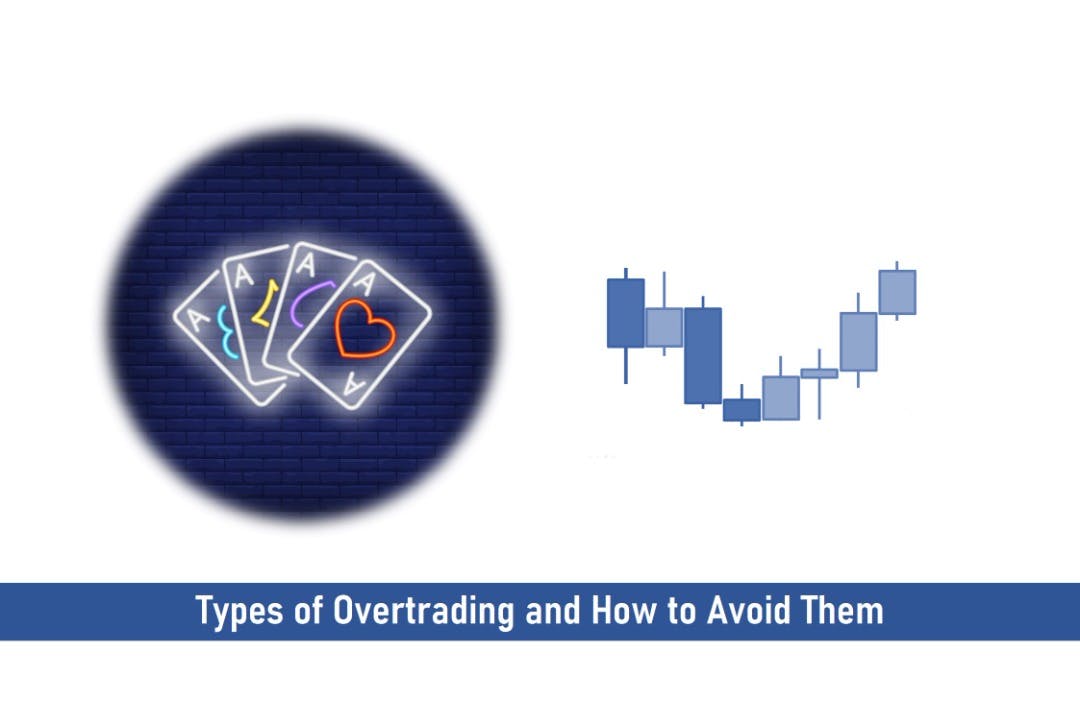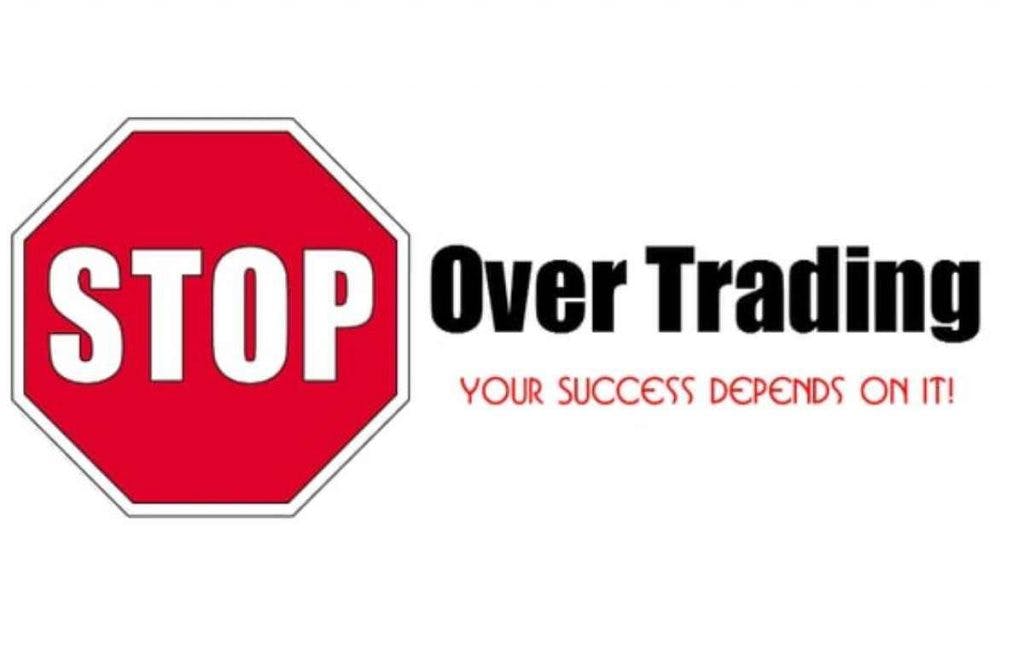
Why does a casino provide free goods or services to both winners and losers? A casino does so because both of them will continue to gamble more than the average person which may lead to overtrading in the process.
Even though the odds are always in the casino’s favor, losers who are desperate to make up for their losses will try to jump off the losing streak by playing.
Winners convinced they are in the middle of the streak will try to ride it to the top, but they invariably give most or all of their winnings back to the casino.

Key Takeaways
•The three most common forms of overtrading are bandwagon trading, hair-trigger trading, and shotgun trading. Each form manifests itself in different ways and to varying degrees, depending on which style the trader adheres to.
•The non-systemic trader uses non-quantifiable data such as the advice of the broker or selected expert, news, personal preferences, observations, and intuition to determine entry and exit points.
•Fast exit trading is compounded by e-trading, which allows you to open or close a position a few seconds after the idea has formed in the mind of the trader.
Professional trading is still not a gamble, but many amateur traders act like they are playing in a casino and over-trade for the same reasons as the average gambler.
Every active trader must learn to trade and not gamble. In this article, we will look at the propensity of traders to over-trade and explore how this problem can affect the portfolio.
Trader Evolution
As all traders develop their skills, each trader follows almost the same path: first as a discretionary trader, then as a technical trader, and ultimately as a strategist or systematic trader.
The trader first analyzes the market direction or trend, then sets targets for the expected movement. Correct reading or forecasting of the market then becomes a top priority, so the trader learns as many new indicators as possible, assuming they represent traffic signals.
This search for the magic combination of indicators leads to the inevitable realization that there can be several scenarios. The trader’s focus then shifts to the likelihood of each outcome and to the risk/reward ratio.
Growth to a successful professional level does not happen until there is an emphasis on strategy. It happens at every turn, and abandoning it often allows a trader to move to the next level.
The three most common forms of overtrading are bandwagon trading, hair-trigger trading, and shotgun trading. Each form manifests itself in different ways and to varying degrees, depending on which style the trader adheres to – non-systemic or technical.
Non-Systemic Over-Trading
The non-systemic trader uses non-quantifiable data such as the advice of the broker or selected expert, news, personal preferences, observations, and intuition to determine entry and exit points. Position sizes and levers are flexible.
While this flexibility can have its advantages, it often does not, which leads to the ruin of the trader. Non-systemic traders often find inaction the hardest part of trading.
As a result, they are ready to take advantage of any development that will allow them to close the next deal.
This impulsive behavior is not inherently trading at all, it is a gamble similar to the one described above. And just like in a casino, the odds are not in favor of an over-trading trader.
Technical Re-trading
Traders who come across technical indicators for the first time often use them as an excuse for decisions that have already been made.
They have already decided which position to take, and then they are looking for indicators that will confirm their decision, which makes them feel more comfortable. Then they formulate the rules, learn more indicators, and design the system.
If the system makes the right decision more often than it makes mistakes, then they believe that they finally did their best and can convince that if more than 60% of transactions are successful, they will improve profitability by increasing the volume of trading.
Unfortunately, this is another example of over-trading that can have serious consequences for a trader’s profitability.
SEE ALSO: Trend Trading: The 4 Most Common Indicators and How to Use them Effectively
Quick Exit
Fast exit trading is compounded by e-trading, which allows you to open or close a position a few seconds after the idea has formed in the mind of the trader.
If the trade moves slightly against the trader, he sells immediately, and if the market expresses gratitude with a tip, the position can be opened before the ad break. Fast Exit Trading is not difficult to learn.
Does the trader have many small losses and few wins? When looking at trade journals, does the conclusion suggest itself that a trader overestimates his victories and drives away thoughts of losses?
Does the trade exit almost immediately after the entry? Are some positions constantly opening and closing? These are all classic, easily identifiable signs of a quick exit.
But the fix is just as easy: only enter a trade when you “know” it will be good (that is, the trade is highly likely to match your research and analysis, and meets all of your specified trading criteria).
If in doubt, don’t make a deal. Losses are much worse than inaction, and the combination of losses is devastating.
Fan Trade
A passion for action often leads traders to take a fan-trading approach, buying whatever they think is a good investment. They may justify this by arguing that diversification reduces risk. But this logic is flawed.
First, true diversification is distribution across multiple asset classes. Second, a few bad trades are never better than just a few trades.
If a trader has identified a promising deal and concentrated his capital on it, then this makes the most sense. A sure sign of fan trading is several small positions open at the same time.
But here’s an even better sign: Look at the history of the trade, and then ask why the trade was made at this time. It will be difficult for a trader who trades haphazardly to give a specific answer to this question.
If you are leaning towards diversifying your investment, it is much better to buy and hold a mixture of market indices. This turns the odds in your favor.
When trading individual positions, be very selective and only trade when there is a high probability of winning: a good probability of success when trading one position at a time can quickly degrade to less than 50% with several simultaneous positions.
Herd Trade
Herd trading is a deliberate attempt by non-systemic traders to imitate the actions of “knowledgeable” traders. This technique is fundamentally flawed for two reasons.
First, even experts do not have the answers to all the questions, and they cannot predict the future. Their experience and talents are just two of many.
The second reason is that when many traders go the same way – following a loudmouth guru, or an influential news-maker with an interest, or elements of technical analysis using the same indicators – this is the first step to a quick loss.
Here’s a basic economic principle: competition lowers margins. In trading, this occurs when herd traders compete with each other to get out of similar positions as early as possible, often causing price slowdown or reversals.
To make matters worse, novice traders often trade “in the herd” and are more likely to exit early, exacerbating this effect.
The strongest signal that a trader is using herd trading is if he adheres to someone else’s recommendations or uses a system developed by someone else.
Does your trading depend on popular indicators with the same settings that beginner traders are taught to? Has the hot new system or indicator lost its reliability?
If you are comfortable with the crowd and uniform, buy an index.
If you want to trade, first develop your own system, do your own research, adapt your indicators, and finally test, experiment, and test again before you start trading.
Frequently Asked Questions (FAQ)
1. How do You Know if You Are Overtrading?
Overtrading can be hard to pinpoint, but if you are consistently making only a certain amount above commissions, or is making random trades with untested methods, then they are likely overtrading.
These will lead to increased trades and increased trading costs.
2. What Causes Overtrading?
Overtrading takes place as a result of an inflationary situation and high prices. Business dealings become costly, machinery and raw materials become expensive and the company has to spend excessively in costs to maintain its level and standard of efficiency.
3. Why do Investors Overtrade?
Overtrading can occur for a number of reasons but all such reasons have the same outcome: poor performance of the investments at the expense of increased broker fees.
Individual traders usually overtrade after they have suffered a significant loss or a number of smaller losses in a usually long losing streak.
4. What is a Herd Mentality?
Herd mentality (also known as mob mentality) describes a behavior in which people act the same way or adopt similar behaviors as the people around them — often ignoring their own feelings in the process.
Think of a sheep blindly following the flock no matter where they go just because that’s what the herd is doing.
Final Thoughts
Various forms of over-trading can be attributed to unprofessional prioritization.
First, the novice trader wants to confirm the success of his trade by taking profits whenever possible.
Secondly, the novice trader wants to reduce his emotional discomfort.
Because of this, he either sells as soon as losses appear or immediately re-enter the market after losses or a period of inactivity in the hope of “recouping” in the same way as a player in a casino. Excessive trading only makes the broker happy.
Read More




